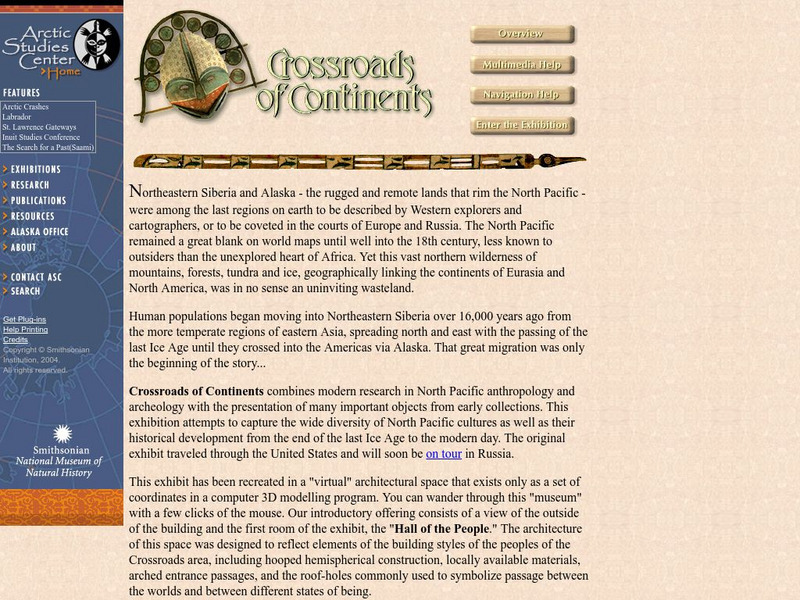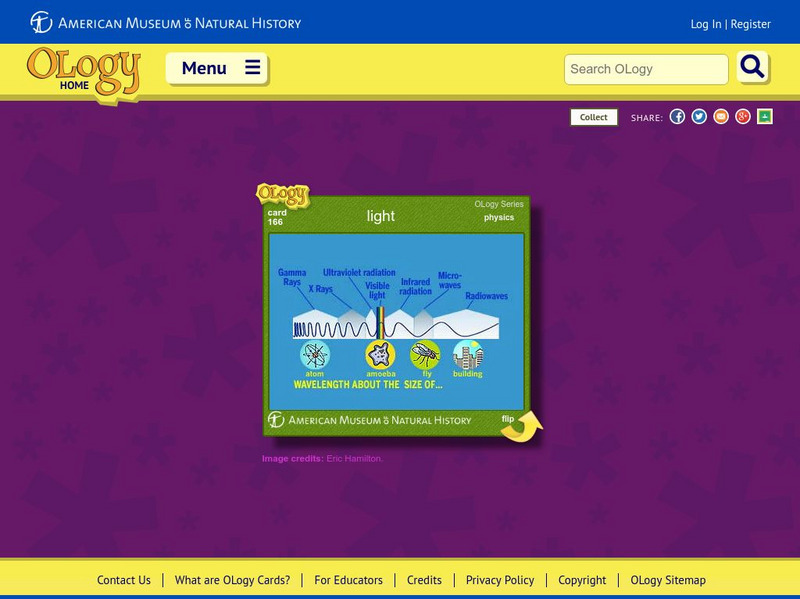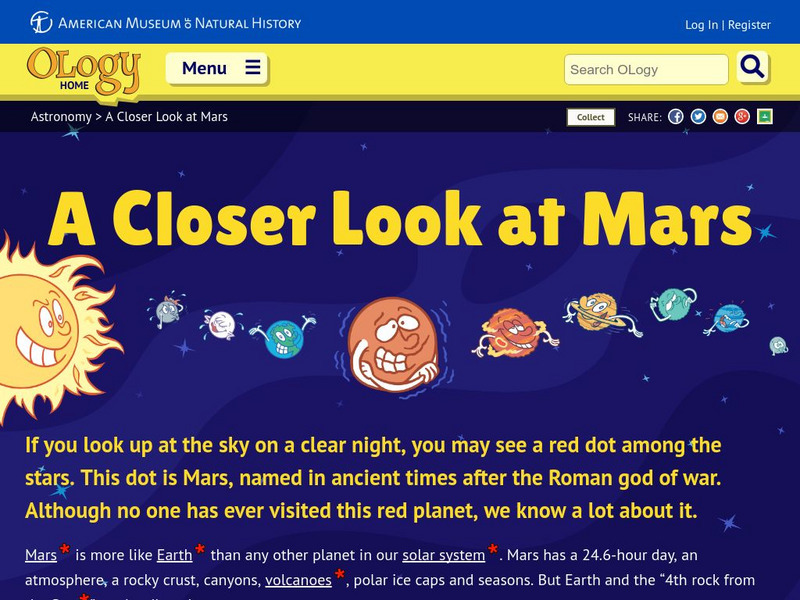American Museum of Natural History
American Museum of Natural History: Ring of Fire O Logy Card
Flip over this interactive OLogy flash card to read about the Ring of Fire, a series of volcanoes in the Pacific Ocean along the Pacific Plate.
American Museum of Natural History
American Museum of Natural History: Portuguese Man of War O Logy Card
Turn over this interactive card and start learning bite-size pieces of useful information about the Portuguese man-of-war, such as its diet, habitat, and physical characteristics.
American Museum of Natural History
American Museum of Natural History: O Logy: Train of Thought
Try out your ability to think like Einstein by working through two thought experiments that help explain how satellites stay in orbit and how the speed of light affects the universe.
American Museum of Natural History
American Museum of Natural History: General Theory of Relativity O Logy Card
Einstein's general theory of relativity is the subject of this interactive OLogy card. Turn it over to find fast facts, questions and answers, and other bite-size pieces of information about the theory.
American Museum of Natural History
American Museum of Natural History: Dinosaurs: Theropod Biomechanics
How fast could a Tyrannosaurus rex really run? Visitors to this resource will see how scientists use theropod biomechanics to simulate the movement of these large dinosaurs.
Smithsonian Institution
National Museum of Natural History: The Allure of Pearls
Exhibition of some of the first known gems to early humans, this collection of pearls includes several world famous precious stones.
American Museum of Natural History
American Museum of Natural History: Ole Roemer and the Speed of Light
This resource provides a concise overview of the speed of light and the Ole Roemer, the first man to measure it.
Smithsonian Institution
National Museum of Natural History: The Splendor of Diamonds
Describes past exhibition of some of the finest gems in the world, this collection of precious diamonds includes several rare and valuable stones.
American Museum of Natural History
American Museum of Natural History: Resources for Learning: Frames of Reference
Use this interactive physics simulation to determine how perception of motion changes with the frame of reference. The simulation introduces the principles of motion with respect to frame of reference.
Other
Museum of Natural History
"Discover the natural wonders of Canada's east coast". Great links to the museum.
Canadian Museum of Nature
Canadian Museum of Nature: Ancient Coral Reefs
The Canadian Museum of Nature provides characteristics and ancient history of global coral reefs.
American Museum of Natural History
American Museum of Natural History: Hot Spots O Logy Card
Hot spots in the earth's mantle create natural phenomena like geysers and volcanoes. Learn about hot spots by reading this interactive ology cards and answer questions when you're finished.
Smithsonian Institution
National Museum of Natural History: Crossroads of Continents
Very interesting Smithsonian web exhibition on the culture of the peoples surrounding the Bering Strait. Enter the museum to find lost cultures due to the Cold War. Fun museum to click around in!
Smithsonian Institution
National Museum of Natural History: Human Characteristics: Tools & Foods
Learn about the history of how humans have used tools to meet their need for food, beginning with the ancient tools our ancestors used millions of years ago. Non-human primates also use some tools.
American Museum of Natural History
American Museum of Natural History: O Logy: What's the Big Idea? Paleontology
Snapshot reference on paleontology explains how the fossil record drives this area of science.
American Museum of Natural History
American Museum of Natural History: Estuaries O Logy Card
Turn over this interactive OLogy card to find fast facts, questions and answers, and similar bite-size pieces of information to help you understand the nature of estuaries.
American Museum of Natural History
American Museum of Natural History: Mexico O Logy Card
Flip over this interactive OLogy card to find fast facts, questions and answers, and similar bite-size pieces of information about Mexico.
American Museum of Natural History
American Museum of Natural History: Light O Logy Card
Flip over this interactive OLogy card and start learning bite-size pieces of useful information about light.
American Museum of Natural History
American Museum of Natural History: O Logy: A Closer Look at Mars
If you look up at the sky on a clear night, you may see a red dot among the stars. This dot is Mars, named in ancient times after the Roman god of war. Although no one has ever visited this red planet, we know a lot about it. This site...
American Museum of Natural History
American Museum of Natural History: Pterosaurs O Logy Card
OLogy cards are like virtual baseball cards about all kinds of science topics. This one is about ancient flying reptiles called pterosaurs. See if you can answer a few questions when you're done reading.
American Museum of Natural History
American Museum of Natural History: O Logy: Meet the Paleont O Logist: Mark Norell
Interview with paleontologist Mark Norell provides insights into his research interests, his career preparation, and his ideas about a range of paleontology-related topics.
Carnegie Museum of Natural History
Carnegie Museum of Natural History: The Iroquois of the Northeast
This site provides a brief look at the history of the Iroquois. The site has information about food, handwork, survival, and modern life.
Carnegie Museum of Natural History
Carnegie Museum of Natural History: Tlingit of the Northwest Coast
Explore the culture, beliefs, and people of the Tlingit Indians of the Northwest Coast.
American Museum of Natural History
American Museum of Natural History: O Logy: Stuff to Do: Buried Bones
A how-to science project with instructions to make a complete dinosaur bone dig site burying chicken bones in plaster of Paris. Click on the starred words to learn more about the topic.


















